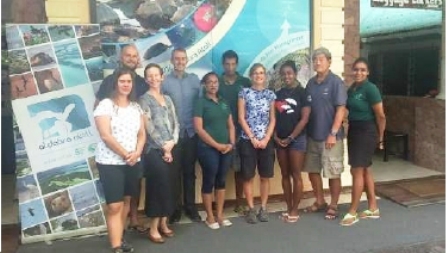Vallée de Mai staff attend cost benefit analysis workshop |28 May 2018

Staff at the Vallée de Mai recently took part in a cost-benefit analysis workshop run by Dr Pike Brown from Landcare Research in New Zealand and Dr Emilia Tjernström from the University of Wisconsin in the United States.
This workshop was part of the wider Inva’Ziles project and will also be provided to projects in the Comores.
It introduced staff to a new piece of software – EPEST - which allows
researchers to compare the economic benefits of different methods of invasive species control, determining which provides most cost-effective solution over a long period of time. Such work is vital in ensuring that invasive species control work, such as rat control, can continue and will protect native species like Seychelles black parrots in the best way possible.
The workshop took place over three days and was greatly appreciated by all attending.
During the workshop, staff were able to learn how to use EPEST with the help of actual data from work being carried out in the Vallée de Mai on rat control. This meant they could compare the economic value and costs of work undertaken by the Inva’Ziles project using livetraps, the potential use of the self-resetting ‘GoodNature’ traps, and mammal specific poison baits. It became clear that not everything was as obvious as anticipated! There is a large number of costs (and benefits) to each method, and it certainly made Vallée de Mai staff think in a lot more detail about the work currently being done by the Inva’Ziles project.
Discussions that emerged from this workshop highlighted the potential for research to take place that uses such economic and ecological data. It is possible that SIF may collaborate with institutions, including the University of Wisconsin, to create a more detailed analysis on some of the data from the Inva’Ziles and other SIF projects.
SIF




